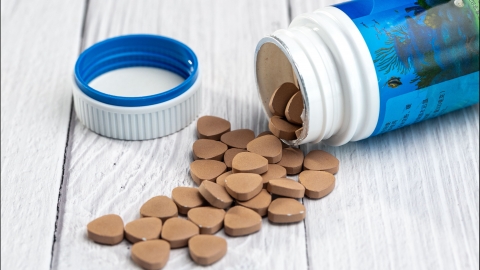What should middle-aged people eat to address calcium deficiency, and how should they supplement it?
Calcium deficiency in middle-aged adults should be addressed through daily dietary supplementation combined with targeted calcium supplements. Foods rich in calcium generally include milk, soy products, sesame paste, dark green vegetables, dried small fish, etc.; common calcium supplements include calcium carbonate D3 tablets, calcium gluconate tablets, vitamin D2 calcium hydrogen phosphate tablets, calcium citrate tablets, and alendronate sodium tablets. The details are as follows:

I. Food Sources
1. Milk: Rich in natural calcium and vitamin D, with a balanced calcium-to-phosphorus ratio that facilitates efficient absorption and utilization by the body. It is an excellent source of dietary calcium. Drinking about 300 mL daily can meet part of the daily calcium requirement and is suitable for regular consumption.
2. Soy Products: Such as tofu and dried tofu, which have increased calcium content after processing. They also contain plant protein and dietary fiber, supporting both nutritional needs and intestinal health, making them valuable components of meals.
3. Sesame Paste: Extremely rich in calcium—nearly 1,100 mg per 100 grams—and also contains vitamin E and iron, which help enhance calcium absorption. It can be used sparingly as a dressing mixed into staple foods or vegetables.
4. Dark Green Vegetables: Such as Chinese kale (jie lan) and rape (yucai), which are not only high in calcium but also contain vitamin K that aids calcium deposition in bones, thereby improving bone density. Blanching or quick stir-frying is recommended to reduce oxalic acid content, which may otherwise inhibit calcium absorption.
5. Dried Small Fish: Small fish can be eaten whole, including bones, which are rich in calcium. They also provide high-quality protein necessary for bone repair. These can be consumed in moderation as snacks or side ingredients.
II. Medications
1. Calcium Carbonate D3 Tablets: Contain calcium carbonate and vitamin D3. Vitamin D3 enhances intestinal calcium absorption and makes these tablets suitable for preventing and treating calcium deficiency in middle age. They should be taken with meals to minimize gastrointestinal irritation, and dosage should be adjusted according to medical advice.
2. Calcium Gluconate Tablets: Mild in taste with moderate calcium content and good bioavailability, making them ideal for middle-aged individuals with weak gastrointestinal function. Dosage should follow product instructions and can be divided throughout the day.
3. Vitamin D2 Calcium Hydrogen Phosphate Tablets: Composed of vitamin D2 and calcium hydrogen phosphate, they directly supply calcium and promote its absorption. Indicated for calcium deficiency disorders, the duration and dosage must be determined under medical supervision.
4. Calcium Citrate Tablets: Highly water-soluble and well-absorbed even without abundant gastric acid, making them suitable for individuals with reduced stomach acid secretion. Can be taken between meals to improve calcium utilization, but strict adherence to medical guidance is required.
5. Alendronate Sodium Tablets: An anti-resorptive medication that helps reduce bone calcium loss, particularly beneficial for middle-aged individuals with osteoporosis. Should be taken on an empty stomach at a fixed time weekly, remaining upright for at least 30 minutes afterward to prevent esophageal irritation.
To prevent calcium loss, it's advisable to avoid high-salt and high-caffeine foods in daily diet. When using calcium supplements, regular monitoring of bone mineral density and blood calcium levels is essential to prevent overdose. Additionally, engaging in moderate physical activity such as brisk walking or tai chi regularly can stimulate bone metabolism and support calcium absorption. If symptoms like lower back pain, leg cramps, or muscle spasms occur, prompt medical evaluation is recommended to adjust the calcium supplementation plan accordingly.









